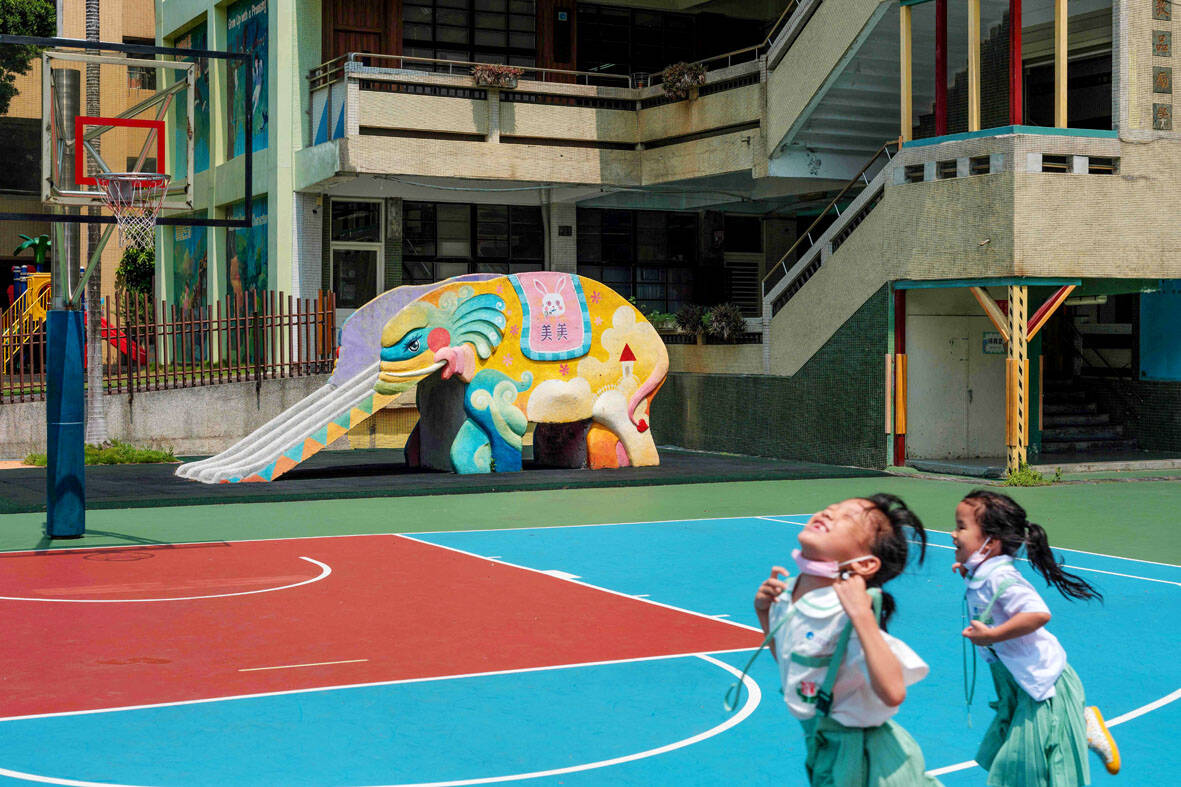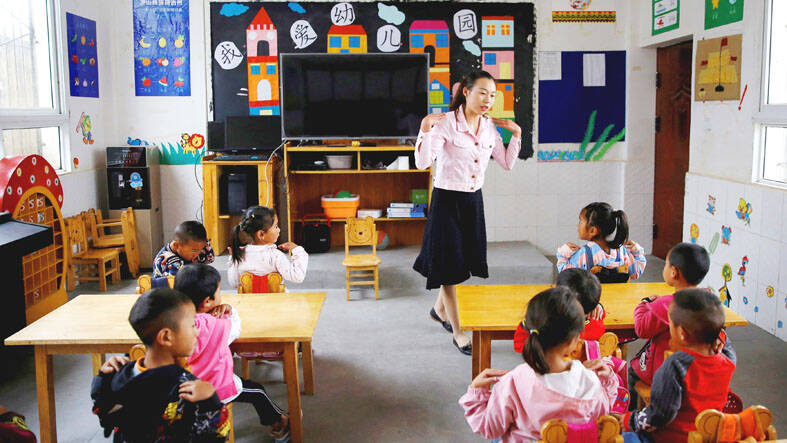Famed Chinese demographer Yi Fuxian (易富賢) recently wrote for The Diplomat on the effects of a cross-strait war on demography. He contended that one way to deter the People’s Republic of China (PRC) is by putting the demographic issue front and center — last year total births in the PRC, he said, receded to levels not seen since 1762.
Yi observes that Taiwan’s current fertility rate is already lower than Ukraine’s — a nation at war that is refusing to send its young into battle — and that its “demographic crisis suggests that Taiwan’s technological importance will rapidly decline, and its defense will become increasingly dependent on the United States.”
He notes that low-fertility countries face slumping innovation, because of the lack of young people to staff and grow their technology industries. It is not difficult to read into Yi’s analysis and see that Taiwan has already peaked.

Photo courtesy of Changhua Christian Hospital
But Yi goes on, relentlessly. Occupation of Taiwan by the PRC would have effects similar to its occupation of Hong Kong: declining birth rates and population flight. With Taiwan, the effects would be much worse, as the effects of sluggish population growth would likely precede PRC occupation. The PRC’s population too is in decline, and it’s likely that a young person reading these words will live long enough to see the US host a larger population than the PRC.
Nor would the effects be limited to the nations involved. Yi says that economic dislocations, including inflation, caused by Russia’s invasion of Ukraine reverberated across Europe, lowering birth rates in Poland and Germany. The PRC will export whatever economic problems it incurs, and it is one of the world’s leading trading economies.
But here in Taiwan we are so advanced, we don’t even need a war to achieve these effects.

Photo: AFP
TAIWAN IN TROUBLE
The Taipei Times dolefully reported last week that the birth rate likely continued to fall last year. As of November, there were 122,360 births, government numbers showed. That means we can expect 135,000 or so births for last year, down from 135,571 in 2023 and 138,986 births in 2022.
Statista.com says that Taiwan had roughly 2,600 elementary schools in 2023. Simple math shows that in just five years there will be 50 kids in the entering class for each elementary school in 2029 to 2030. In the late 1980s I worked near the famed elementary school in New Taipei’s Yonghe (永和區) that had over 11,000 children enrolled. That figure is not far from 10 percent of the current entering kindergarten class for the entire nation. Another way to look at it: the seven years from 2011 to 2017 saw over 350,000 more children born than the seven years from 2018 to last year.

Photo: Reuters
Low birth rates last year led to the closure of nine elementary schools. Eight high schools stopped accepting new admissions, indicating that they too will close soon. This is only first blood.
In the next decade thousands of teachers and administrators are going to lose their jobs. Similar numbers of associated street vendors, shops, transportation jobs and cram school jobs will disappear. The effects will ripple across every small industry, from printers to sign makers to health clinics. Few of those workers and small business owners will have the skills to switch to some other industry. No doubt developers will be delighted when large tracts of urban land become available as schools close, so they can build more of the apartment towers that are choking the life out of Taiwan’s birth rates.
The political effects of such changes will dwarf the silly protest vote last year that handed the legislature to the pro-China parties. Recall that the die-off of small businesses during the recent pandemic was a major factor in the national shift away from the Democratic Progressive Party (DPP). Many looked to the Taiwan People’s Party (TPP) to save them in the last election. Will they be looking to the PRC in five years? In 10?
Moreover, if we project that population collapse forward, of the 135,000 estimated births last year, half are male. That suggests a pool of just 67,000 males at 18 years of age for conscription in 2042 (for the 7 years from 2018 to last year, it is just 550,000 men).
Another 67,000 females will reach their prime productive years. At the nation’s current total fertility rate (TFR) of roughly 0.8, those women will birth just 53,600 babies in their lifetimes. At present females under 15 number 1,346,275. They can be expected to have 1.08 million children. We are already desperately short of labor across all sectors.
Recall that birth rates are slowly falling. There is plenty of room to fall: the interiors of some South Korean cities are at 0.5 TFR and still plummeting.
The government has repeatedly warned that the population will drop below 15 million by 2070, yet it makes no fundamental changes. But the things I just described will largely take place before 2050.
The reader may be moved to protest that women can have children into their early 40s. However, the 2023 study “Age and Infertility: Revisited” found that the ability of a woman to get pregnant peaks at 20 and plummets by two-thirds after 33. Many of the women putting off births into their 30s will never have children. We are not in a birth rate “crisis.” We are awakening in a house that is already in flames.
President William Lai’s (賴清德) administration has already promulgated a policy making dual-income families with two children aged six or younger with an annual income of NT$1,461,000 (US$44,400) or less exempt from paying income tax. This will likely have very little effect, as in other countries where such approaches have been tried.
Indeed, the government implemented policies to promote births beginning in 2018. In 2021, then premier Su Tseng-chang (蘇貞昌) announced NT$85 billion in subsidies to be implemented by 2023, and the government’s monthly child support subsidy would rise from NT$3,500 to NT$5,000.
In July the Lai government announced its upgraded national childcare policy for children aged up to six. This policy upgraded measures such as enlarging affordable education and care service capacities, increasing child care subsidies and creating more preschool classes dedicated to enrolling two-year-olds. These too will surely fail, as they have wherever they have been tried.
We are now six years into various programs offering an ever-growing pile of financial incentives to have children, and total births have fallen every year.
Time to address things like turning apartment towers into single-family homes, encouraging remote work, improving boss culture, salaries and working hours, creating walkable cities and promoting pro-natal beliefs and values.
Otherwise, things will end not with a bang, but with a whimper — unheard — of the babies who were never born.

On April 26, The Lancet published a letter from two doctors at Taichung-based China Medical University Hospital (CMUH) warning that “Taiwan’s Health Care System is on the Brink of Collapse.” The authors said that “Years of policy inaction and mismanagement of resources have led to the National Health Insurance system operating under unsustainable conditions.” The pushback was immediate. Errors in the paper were quickly identified and publicized, to discredit the authors (the hospital apologized). CNA reported that CMUH said the letter described Taiwan in 2021 as having 62 nurses per 10,000 people, when the correct number was 78 nurses per 10,000

As we live longer, our risk of cognitive impairment is increasing. How can we delay the onset of symptoms? Do we have to give up every indulgence or can small changes make a difference? We asked neurologists for tips on how to keep our brains healthy for life. TAKE CARE OF YOUR HEALTH “All of the sensible things that apply to bodily health apply to brain health,” says Suzanne O’Sullivan, a consultant in neurology at the National Hospital for Neurology and Neurosurgery in London, and the author of The Age of Diagnosis. “When you’re 20, you can get away with absolute

May 5 to May 11 What started out as friction between Taiwanese students at Taichung First High School and a Japanese head cook escalated dramatically over the first two weeks of May 1927. It began on April 30 when the cook’s wife knew that lotus starch used in that night’s dinner had rat feces in it, but failed to inform staff until the meal was already prepared. The students believed that her silence was intentional, and filed a complaint. The school’s Japanese administrators sided with the cook’s family, dismissing the students as troublemakers and clamping down on their freedoms — with

As Donald Trump’s executive order in March led to the shuttering of Voice of America (VOA) — the global broadcaster whose roots date back to the fight against Nazi propaganda — he quickly attracted support from figures not used to aligning themselves with any US administration. Trump had ordered the US Agency for Global Media, the federal agency that funds VOA and other groups promoting independent journalism overseas, to be “eliminated to the maximum extent consistent with applicable law.” The decision suddenly halted programming in 49 languages to more than 425 million people. In Moscow, Margarita Simonyan, the hardline editor-in-chief of the